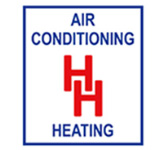
You shouldn’t have to give up comfort or empty your wallet to keep your home at a refreshing temp during hot days.
But what is the ideal temperature, exactly? We review suggestions from energy experts so you can select the best temperature for your loved ones.
Here’s what we recommend for the most energy-efficient setting for air conditioning in Mechanicsburg.
Recommended Thermostat Settings for Summer
Most families find setting the thermostat at 72-73 degrees is most comfortable. However, if there’s a huge difference between your indoor and outside warmth, your AC costs will be bigger.
These are our recommendations based on the U.S. Department of Energy (DOE) and ENERGY STAR®.
While at home: 78 degrees. While that sounds hot, there are ways you can keep your residence refreshing without having the air conditioning on all the time.
Keeping windows and curtains shut during the day keeps cool air where it should be—inside. Some window solutions, like honeycomb shades or plantation shutters, are created to offer more insulation and better energy conservation.
If you have ceiling fans in your house, the DOE says you can increase thermostat temperatures about 4 degrees warmer without giving up comfort. That’s since they refresh by a windchill effect. Since they cool people, not spaces, shut them off when you leave a room.
If 78 degrees still feels too uncomfortable at first glance, try doing a test for approximately a week. Get started by increasing your temperature to 78 degrees while you’re at your house. Then, steadily lower it while using the advice above. You could be amazed at how cool you feel at a warmer temperature setting.
While away: 88 degrees. There’s no need to keep the air conditioning working all day while your house is vacant. Moving the setting 7–10 degrees higher can save you an estimated 5–15% on your air conditioning expenses, according to the DOE.
When you come home, don’t be tempted to set your thermostat under 78 to cool your house more quickly. This isn’t productive and typically leads to a more expensive AC bill.
A programmable thermostat is a useful approach to keep your settings under control, but you need to set programs. If you don’t set programs, you risk forgetting to move the set temperature when you take off.
If you need a convenient resolution, think over buying a smart thermostat. This thermostat connects with your phone, so it knows when you’re at home and when you’re away. Then it instinctively changes temperature settings for maximum savings. How much exactly? An estimated $180 annually on heating and cooling, according to ENERGY STAR.
Another plus of installing a smart thermostat? You can use your phone to keep an eye on and change temperature settings from nearly anywhere.
While sleeping: Around 70 degrees. While ENERGY STAR suggests 82 degrees, that could be unpleasant for most families. Many people sleep better when their sleeping area is chilled, so that’s why the National Sleep Foundation recommends 60–67 degrees. But that may be too cold, due to your pajama and blanket preference.
We recommend trying an equivalent test over a week, setting your temperature higher and steadily turning it down to choose the best temperature for your house. On pleasant nights, you might learn keeping windows open at night and running a ceiling fan is a superior idea than using the air conditioner.
More Methods to Save Energy During Warm Weather
There are additional ways you can save money on AC bills throughout warm weather.
- Get an energy-efficient cooling system. Central air conditioners only work for about 12–15 years and lose efficiency as they get older. An updated air conditioner can keep your residence cooler while keeping cooling expenses low.
- Book yearly air conditioner service. Routine air conditioner maintenance keeps your system running like it should and might help it operate at better efficiency. It can also help lengthen its life span, since it allows technicians to discover small troubles before they cause a major meltdown.
- Put in new air filters frequently. Use manufacturer instructions for switching your air filter. A clogged filter can lead to your system short cycling, or switch on and off too frequently, and drive up your utility.
- Check attic insulation levels. Nearly 90% of residences in the U.S. don’t have adequate insulation, according to the Insulation Institute. Many southern climates require 13–14” of attic insulation, while northern climates need 16–18”.
- Have your ductwork inspected. Ductwork that has loosened over time can seep conditioned air into your attic, walls or crawl space. This can result in major comfort troubles in your residence, such as hot and cold spots.
- Seal openings, doors and windows. Keep humid air in its place by plugging cracks. You can also caulk or weather strip doors to keep more cool air indoors.
Save More Energy This Summer with H & H Service Company
If you need to use less energy during hot weather, our H & H Service Company pros can help. Get in touch with us at 717-220-4502 or contact us online for additional information about our energy-saving cooling options.




